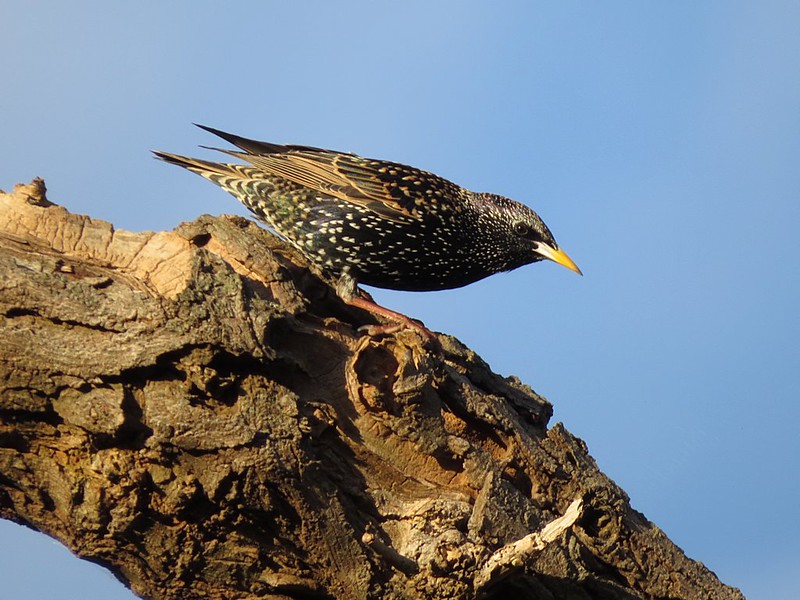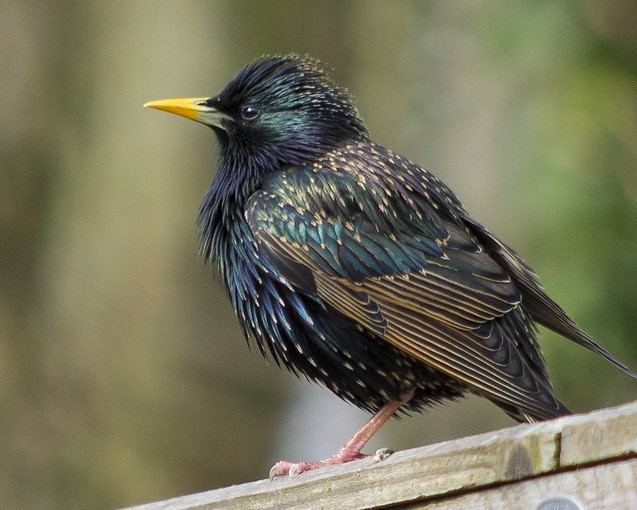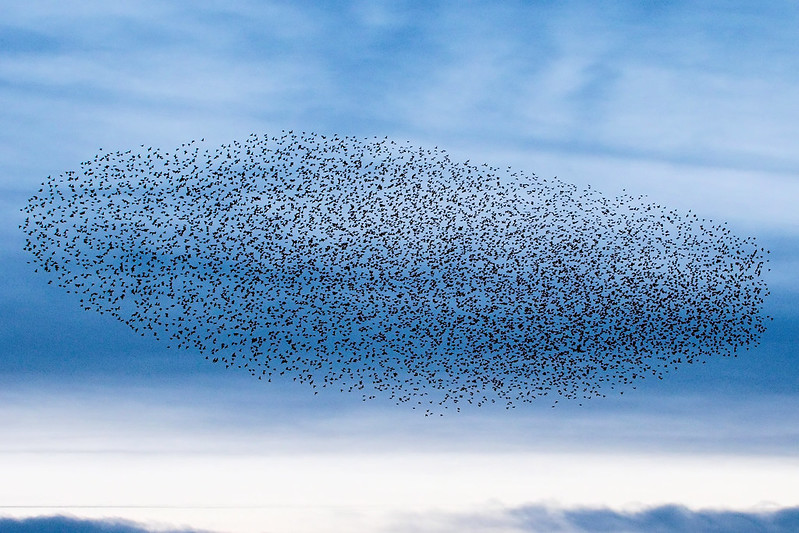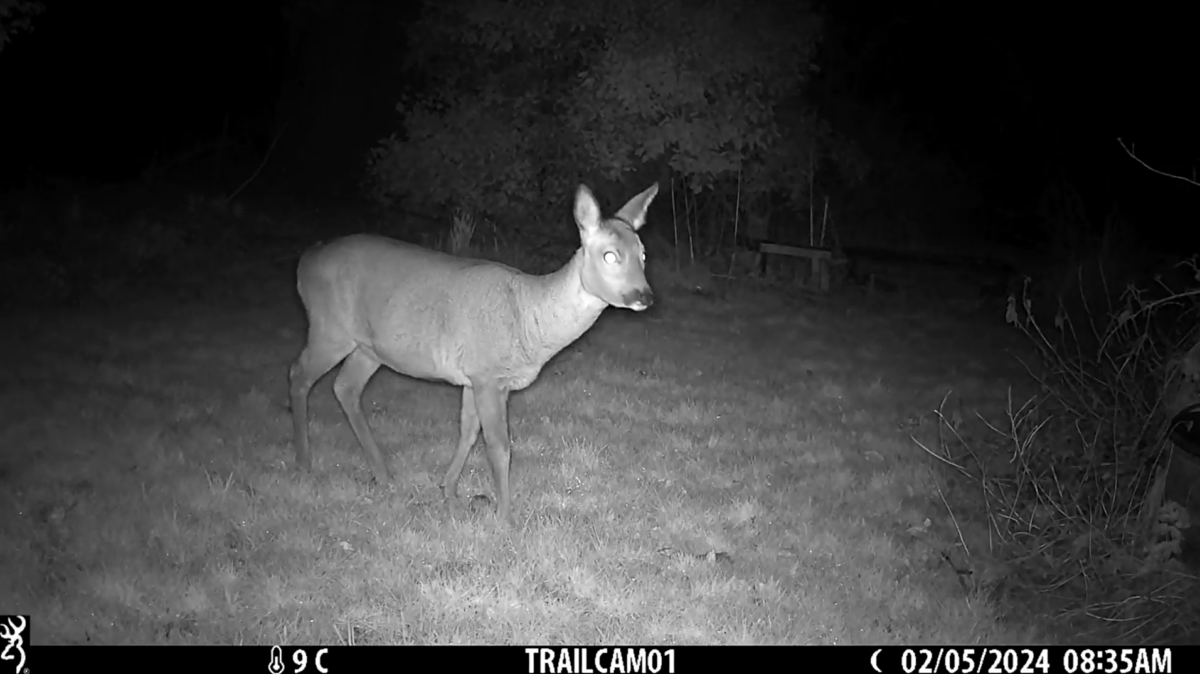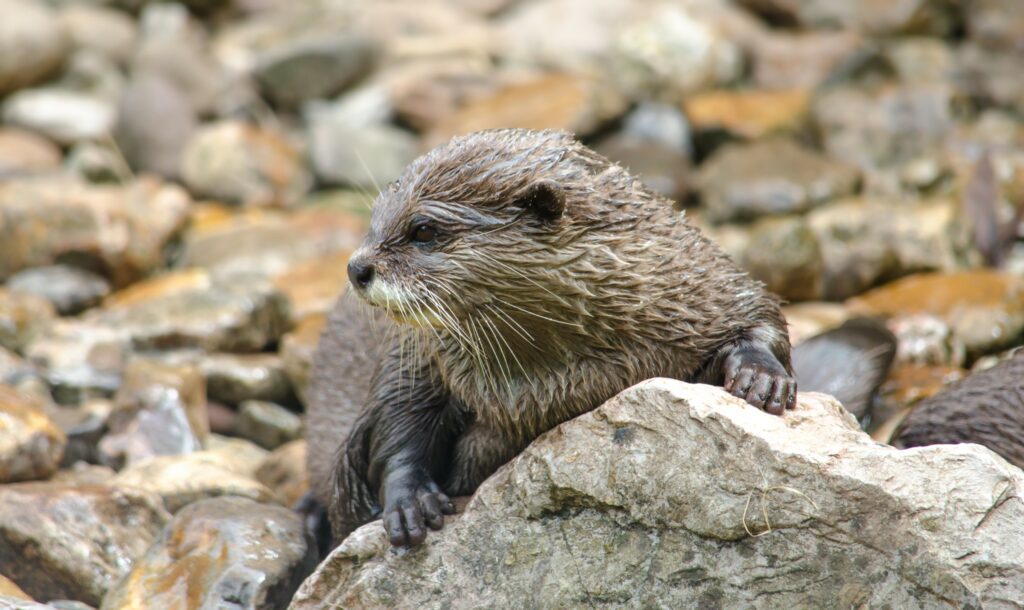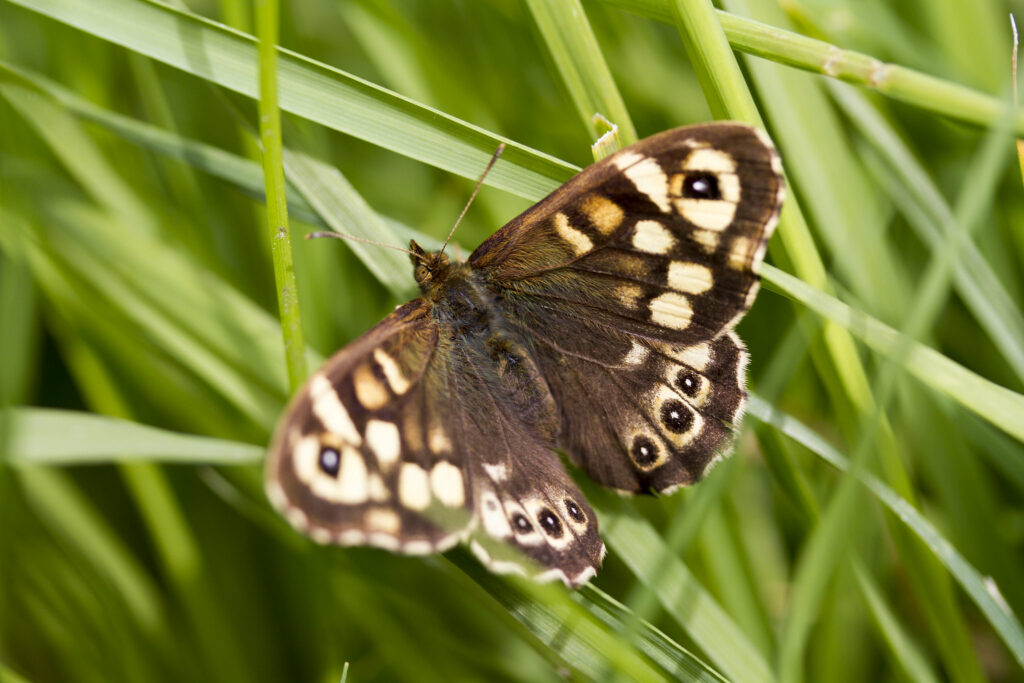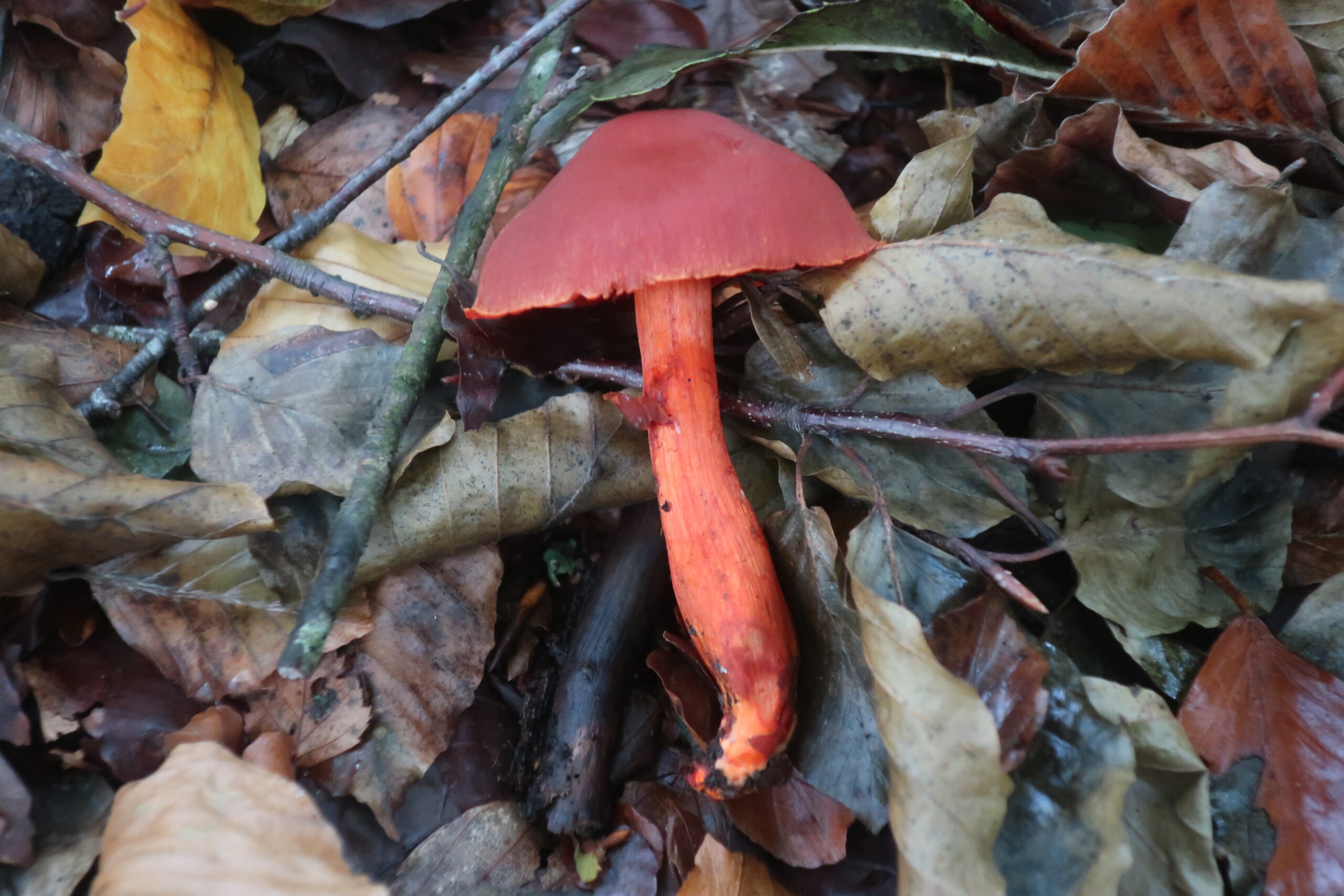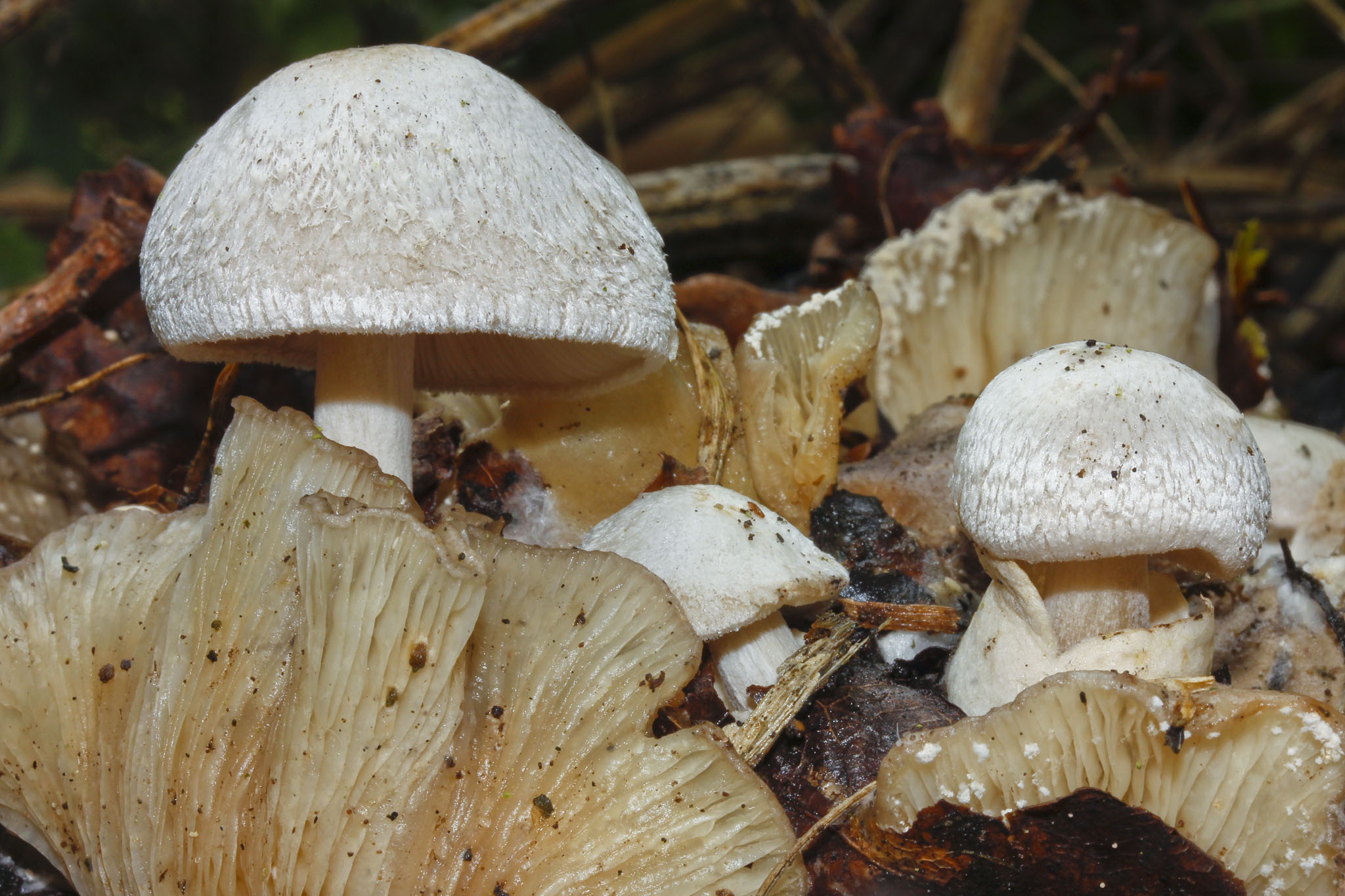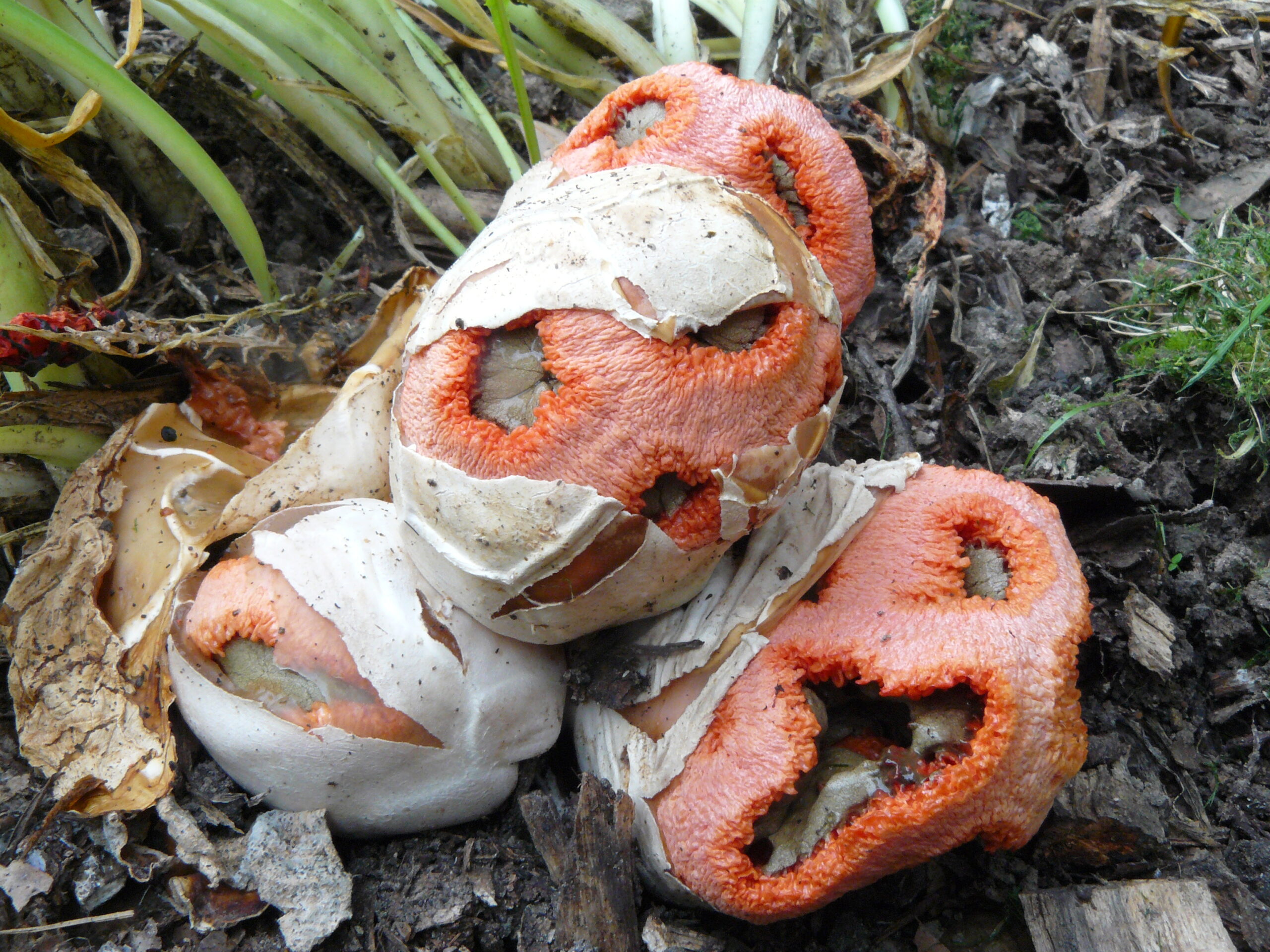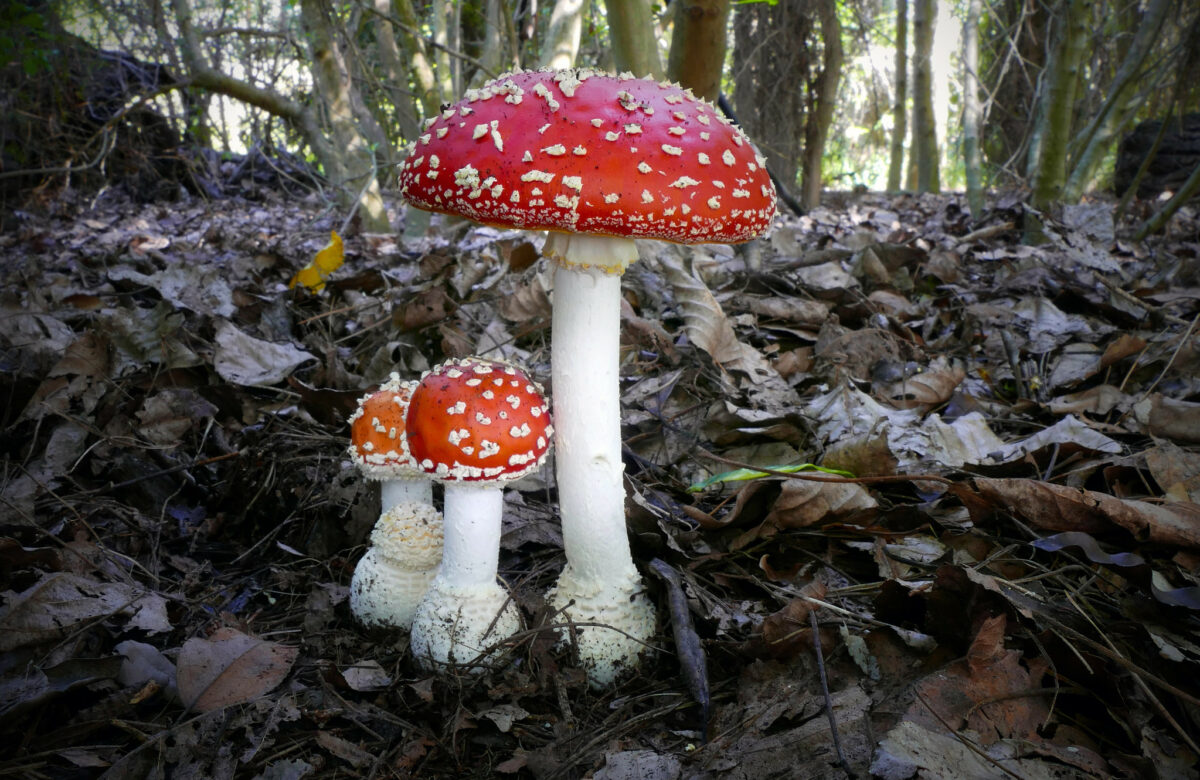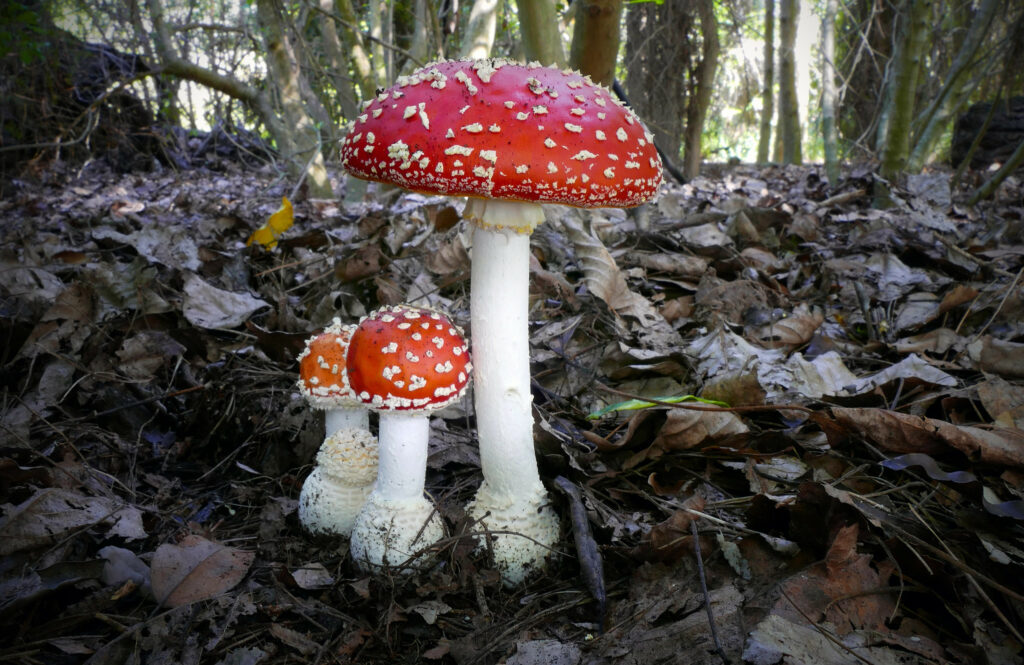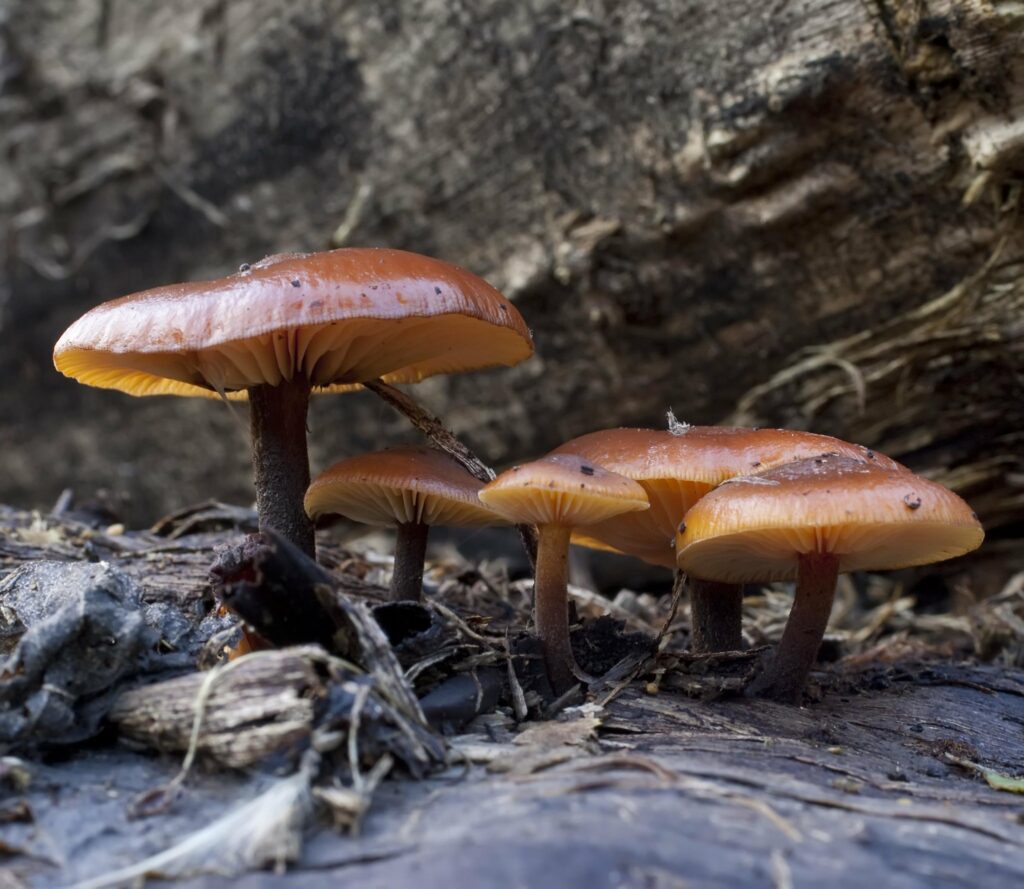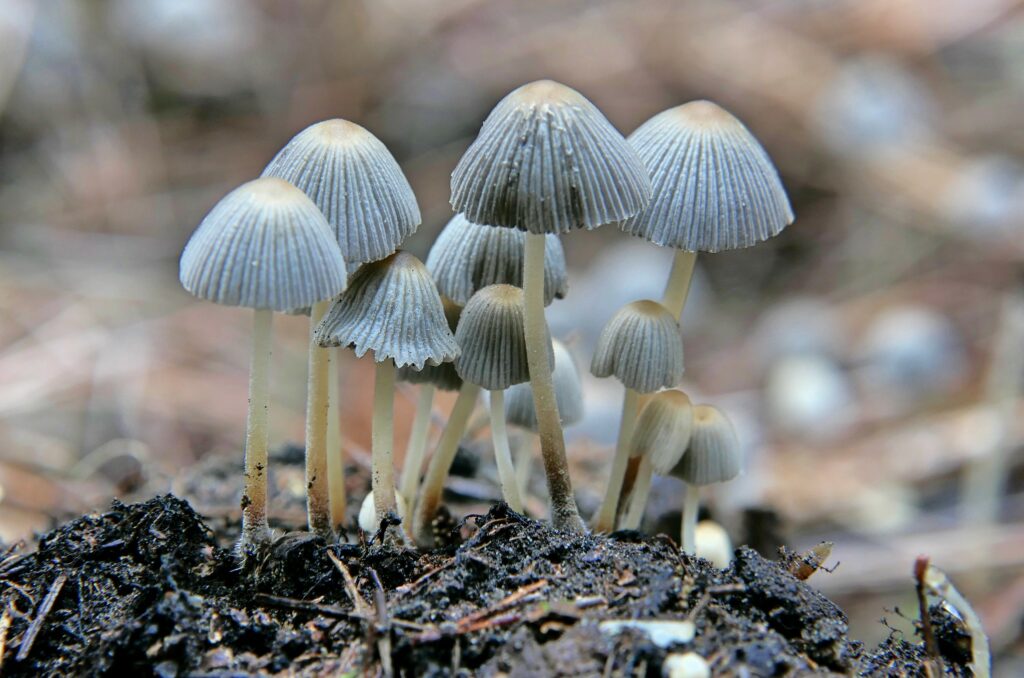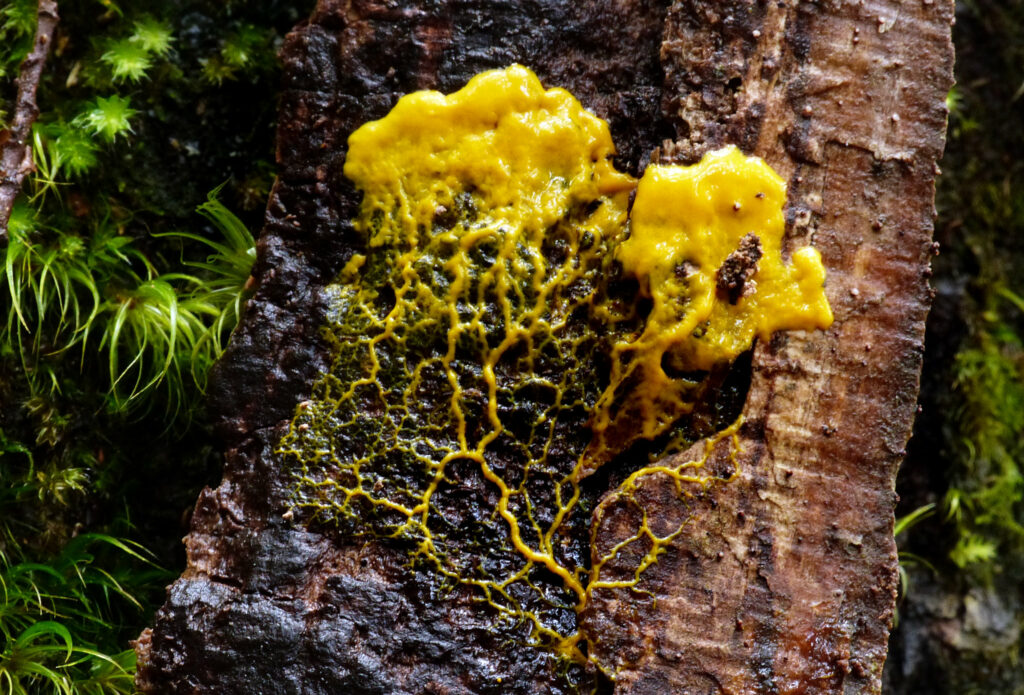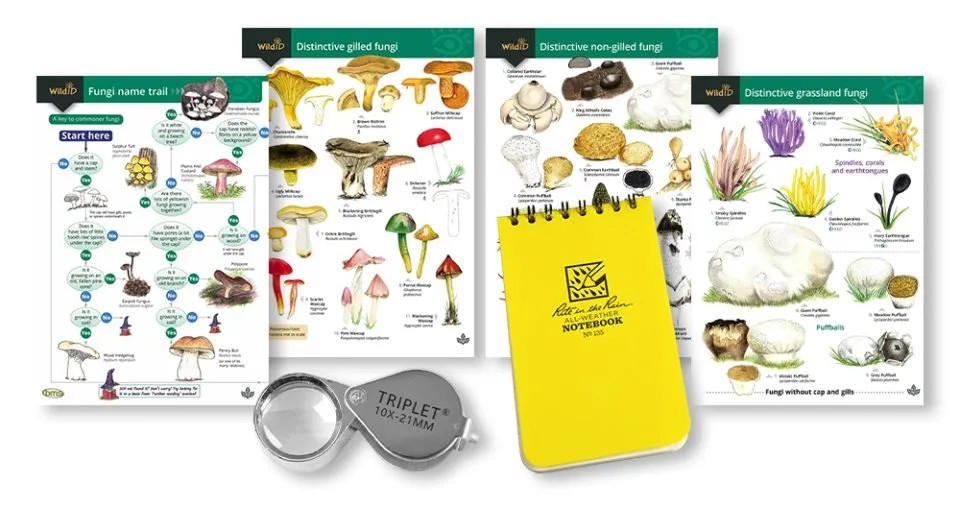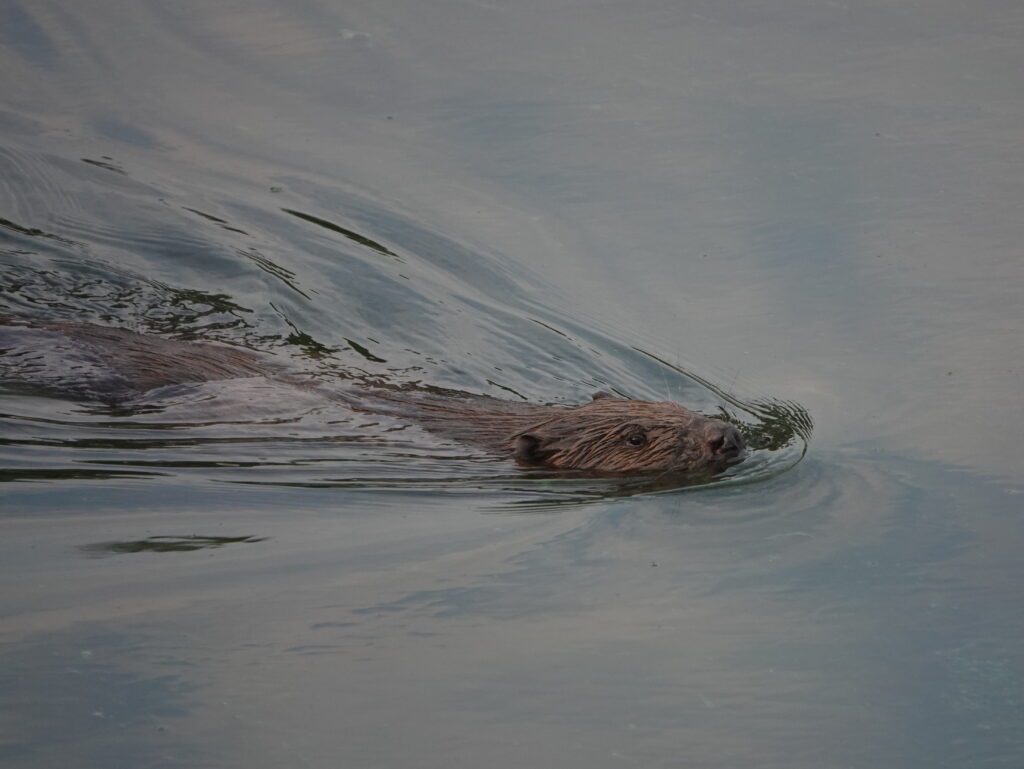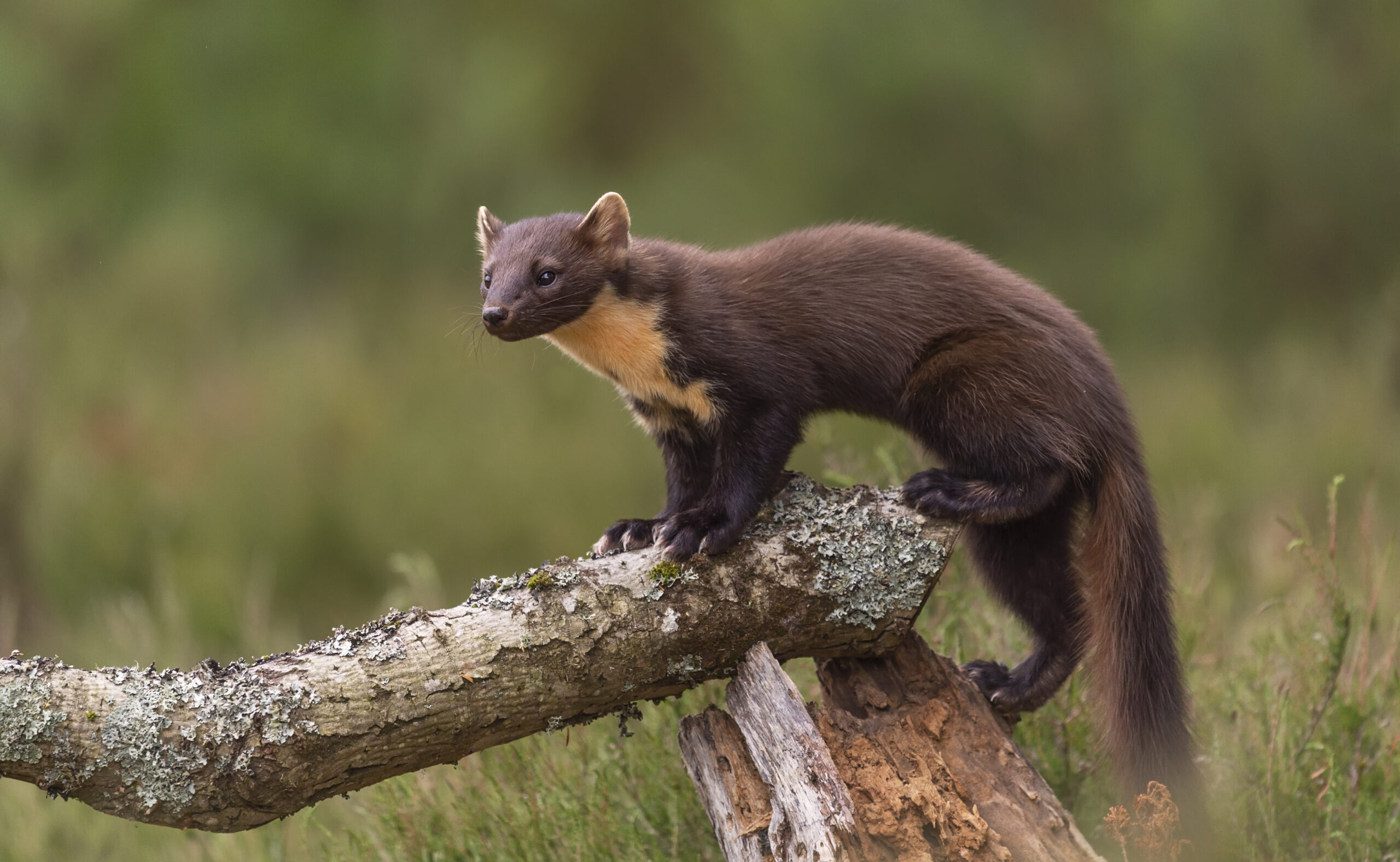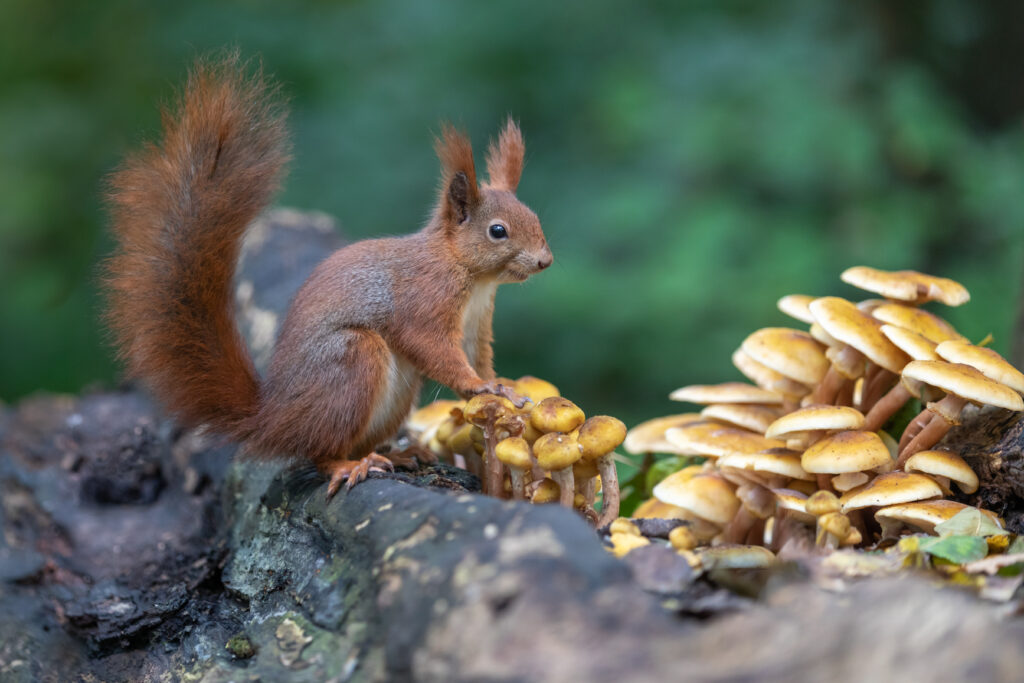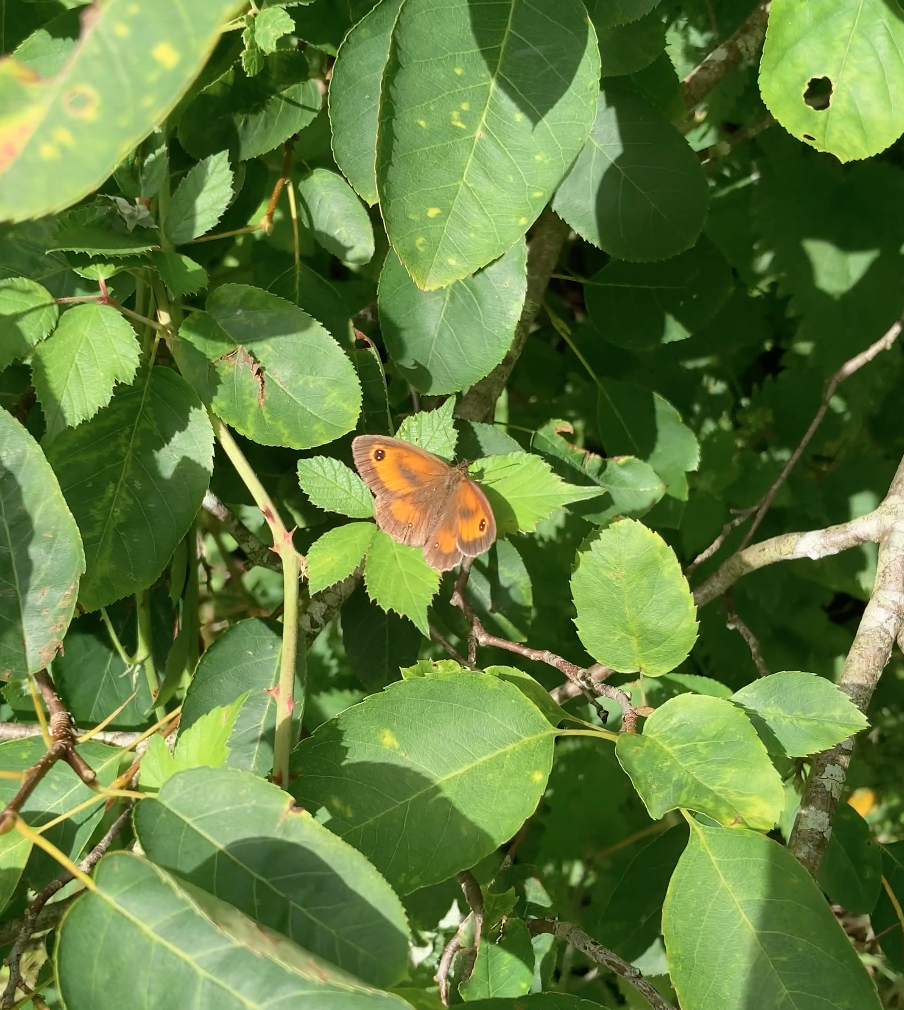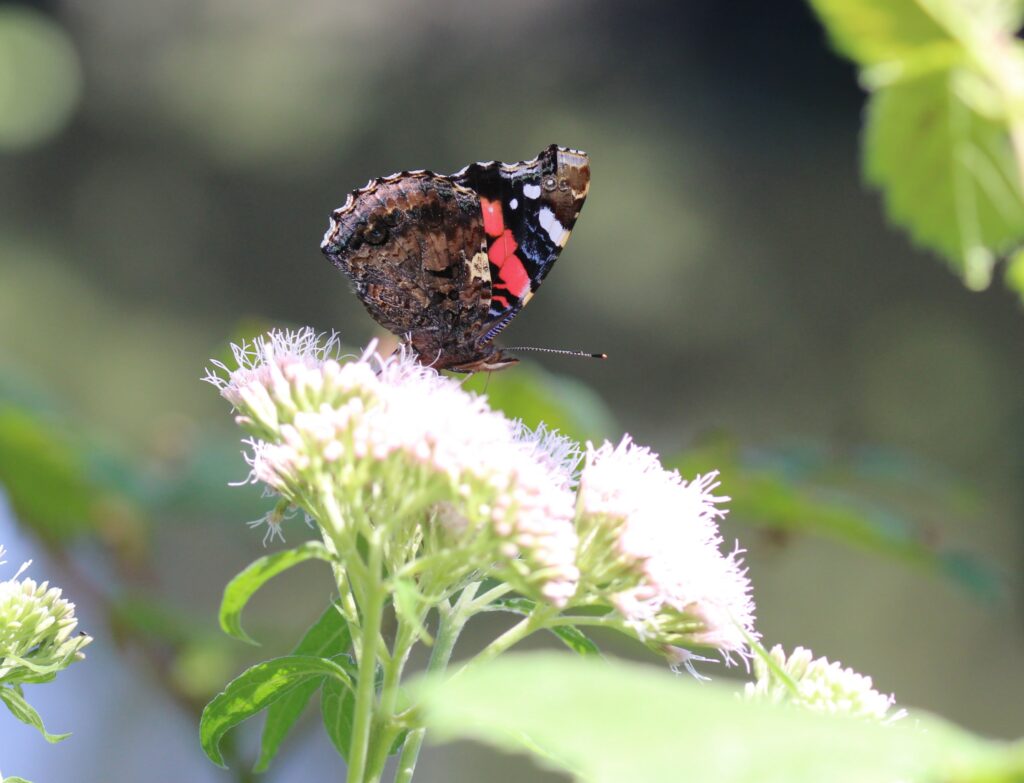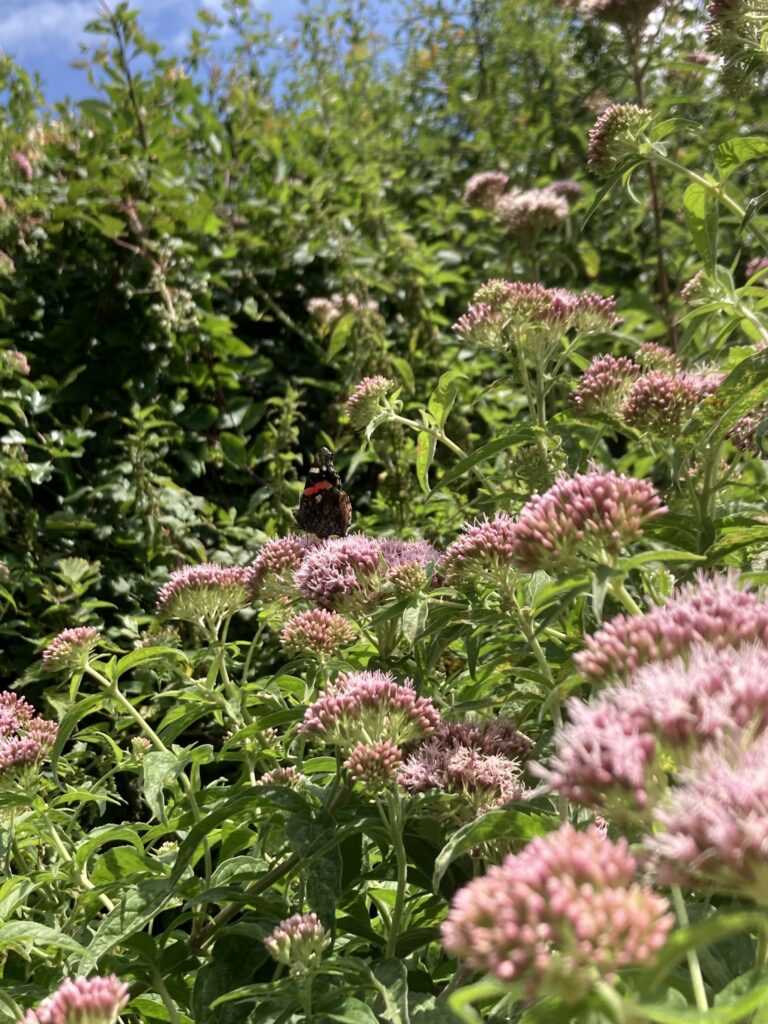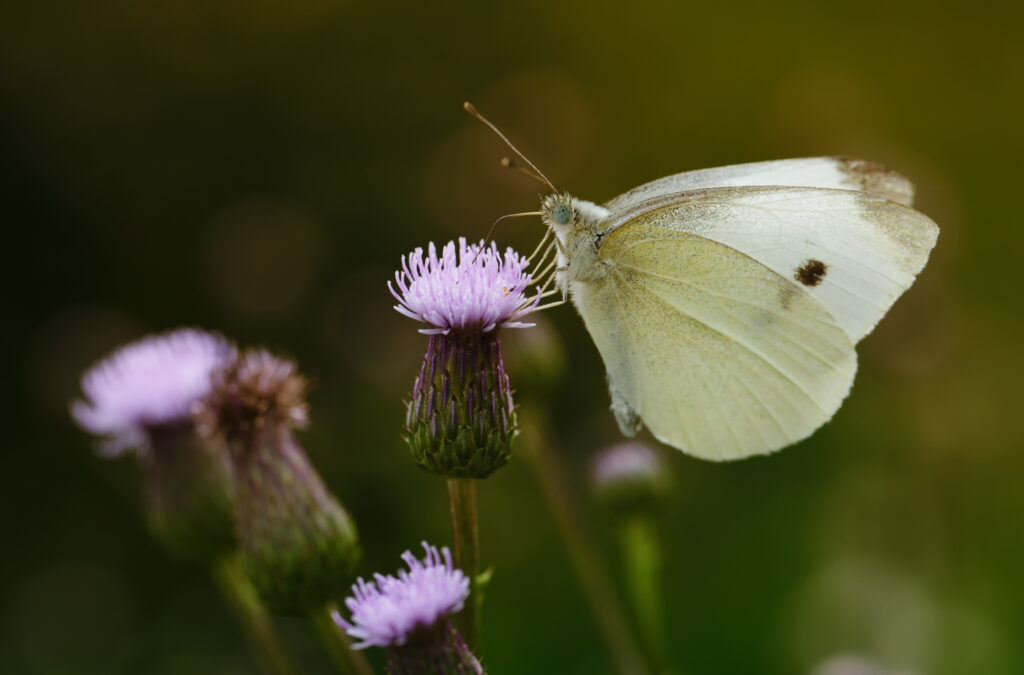Foraging for food is an easy way to connect people of all ages with nature. Some of us may forage unknowingly while picking juicy blackberries in the summer months, and some of us may be unaware of the vast array of edibles around us throughout the year. Here we have selected a handful of items to forage through autumn and winter, highlighting where you can find them and their culinary uses.
It is important to be certain of your identification, so if you are unsure, check all foraged foods with a professional as some plants have toxic look-alikes. Remember to forage responsibly by leaving plenty behind for wildlife and allow plants to set seed or spore for regeneration.
Mushrooms and Fungi
Oyster Mushrooms (Pleurotus ostreatus)
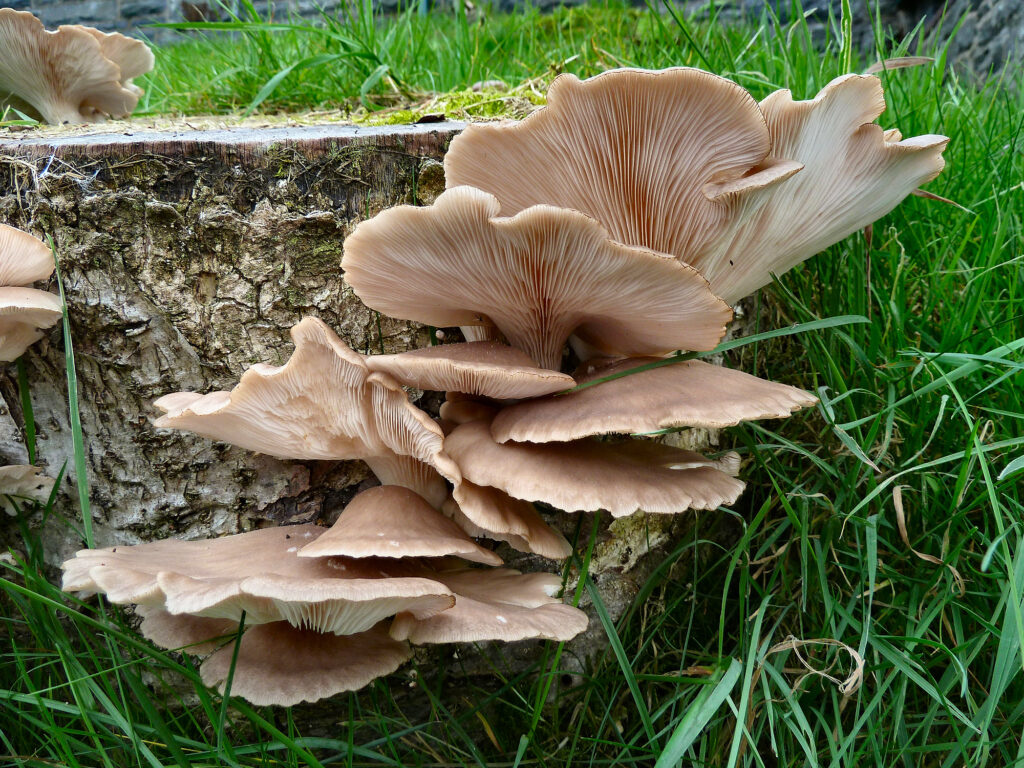
Identification: With its distinctive appearance, this bracket fungus is instantly recognisable. It has an oyster-shaped cap, that can be white, cream, grey or tan in colour and measures up to 25cm across. The gills underneath can vary in thickness with age, but are generally white or cream in colour.
Distribution: Oyster mushrooms can be found throughout the year in large numbers, but they are most commonly seen in the winter months growing on deciduous hardwoods, such as beech.
Culinary Uses: Oyster mushrooms have a meaty texture and a mild, nutty flavour. They have a diversity of culinary applications and are often used to substitute meat due to their fleshy texture. They can be sauteed, stir fried, grilled and roasted, or used as an ingredient in soups, stews, risottos and pasta.
Did you know? Oyster Mushrooms are carnivorous and can digest nematodes (microscopic, unsegmented worms).
Velvet Shank Mushroom (Flammulina velutipes)

Identification: Growing in overlapping tiers, Velvet Shank Mushroom caps can measure up to 7cm in diameter and 10cm in height. The caps are bright orange, with a pale edge and a darker area towards the middle, which interestingly becomes slimy to the touch in wet weather. The gills are broad and white, turning yellow with maturity and the stalk is fibrous and soft.
Distribution: The dense clusters of this fungus can be found on dead and decaying broadleaved trees from late autumn to early spring. It is fairly common throughout the UK and can be found on the stumps and trunks of hardwood trees. The fungus shows a preference for elm, but can also be found on beech, oak and Hawthorn.
Culinary Uses: Velvet Shank has a sweet, nutty flavour and a chewy texture. They are only edible once cooked, and can be used in soups, casseroles and stews, or can be preserved using oil or vinegar for use throughout the season. For improved texture, the skin and stalks should be removed during preparation.
Did you know? Velvet Shank Mushrooms are one of few species that can be found in December because they can survive frost and being frozen solid.
Beefsteak Fungus (Fistulina hepatica)

Identification: Also known as Ox-tongue Fungus due to its resemblance as a young fungus, this bracket fungus grows up to 25cm in diameter and 6cm in thickness. The upper surface is a deep red and it has a cream-coloured underside that is covered with small pores.
Where/when: Beefsteak Fungus can be found from late summer to autumn and is common in broadleaved woodland. It can be spotted close to the ground on tree trunks and stumps, particularly Sweet Chestnut and oaks.
Culinary Uses: This fungus has a marbled, rubbery texture and a slightly sour, acidic flavour. It can be eaten raw when sliced thinly but is more commonly cooked in larger chunks. During preparation, Beefsteak Fungus should be simmered for a little while to soften the flesh.
Did you know? Beefsteak fungus will ooze a watery blood-like substance when cut.
Nuts and Seeds
Chestnuts, Sweet Chestnut Tree (Castanea sativa)
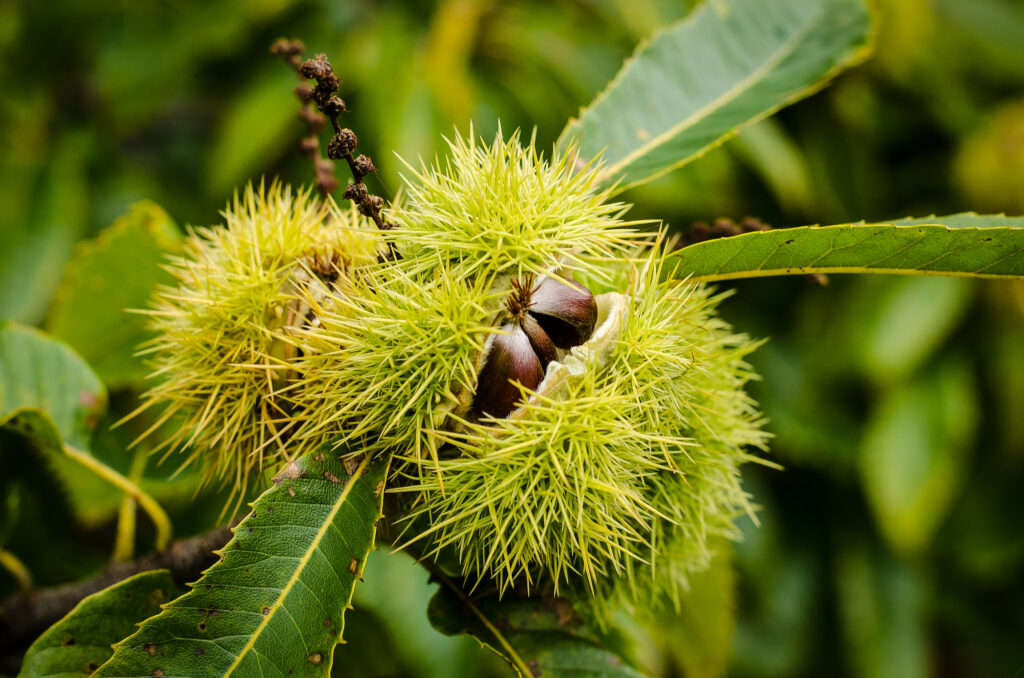
Identification: Chestnuts grow on Sweet Chestnut trees; a large deciduous species which can grow up to 35m in height. It has long, toothed leaves that can grow up to 28cm in length and its flowers are long, yellow catkins. Sweet Chestnuts produce fruit cases that are covered in soft green spikes, and inside these cases are up to three shiny brown chestnuts.
Distribution: Sweet Chestnut trees are mostly found in south-east England in woodlands, towns and gardens. The chestnuts begin to drop from October and can be found until early winter.
Culinary Uses: Chestnuts can be baked, boiled, roasted, candied or stored in syrup. Before cooking, a cross should be scored on the bottom to prevent them from exploding. Once cooked and peeled, chestnuts can be used in cakes and stuffing and are often enjoyed as a festive treat.
Did you know? In the UK, it is believed that Sweet Chestnut trees were introduced by the Romans as a source of flour.
Walnuts, Walnut Tree (Juglans regia)

Identification: These seeds are foraged from the Walnut tree, a large, broadleaved deciduous species that can grow up to 35m in height. The bark of the Walnut is smooth and olive-brown in colour, which fades to grey as the tree matures. The pinnate leaves have up to nine pairs of leaflets, with one terminal leaflet at the end and the tree has long, yellow green coloured catkins. The brown, wrinkled walnuts can be found inside a green husk which splits as it ripens and can be picked from late autumn.
Distribution: A common and widespread species throughout the UK, Walnut trees can be found on farmland, towns, parks and gardens.
Culinary Uses: Walnuts are a popular snack and can be incorporated into several dishes, sweet or savoury. They can be eaten raw, roasted, fried or pickled.
Did you know? Walnut leaves are said to smell of furniture polish when crushed.
Hazelnuts, Hazel Tree (Corylus avellana)
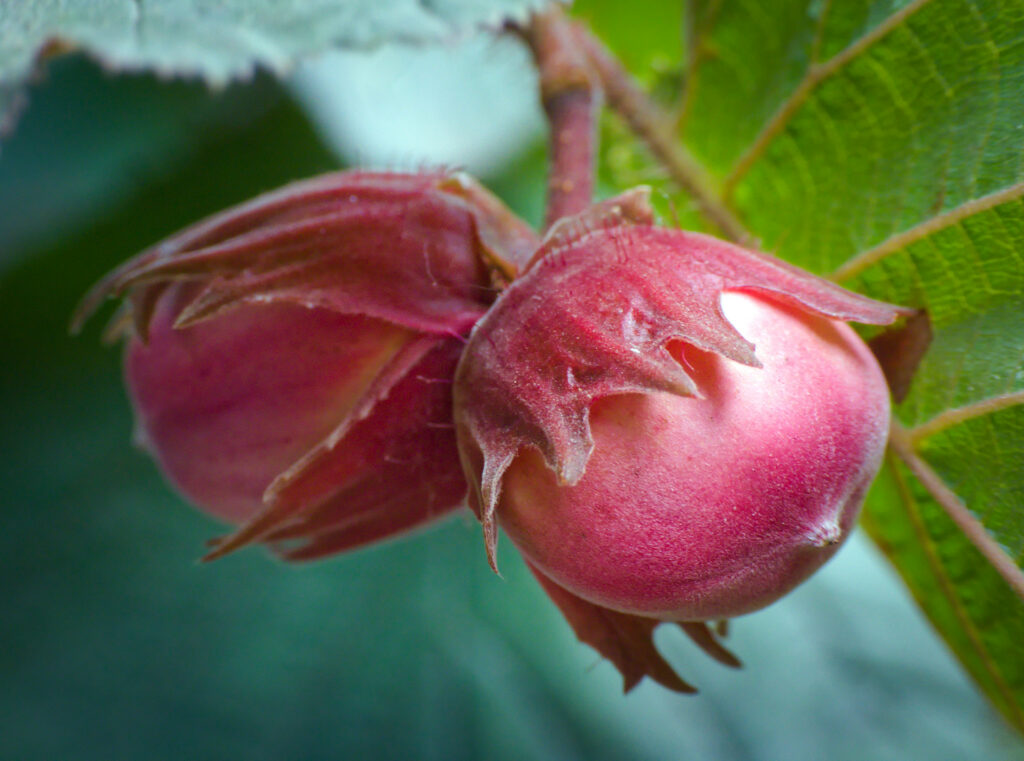
Identification: Mature Hazel trees grow to around 12m tall and are easily identified by their leaves. They are soft to the touch, with a round shape, pointed tip and serrated edges. The flowers consist of yellow cylindrical catkins that hang in clusters from mid-February, giving way to the oval fruits which hang in groups of around four and are surrounded by leafy bracts.
Distribution: Common and widespread across the UK, Hazel trees can be found in woods, hedgerows, parks and gardens. Hazelnuts are present from late August and are ready to harvest up to October when the husks are golden brown and begin to split.
Culinary Uses: Once ripened in a dark, dry place, hazelnuts can be roasted or baked, and used to create stuffing, nut butters, pastry fillings and traditional festive confectionary.
Plants and Trees
Stinging Nettle (Urtica dioica)

Identification: Stinging Nettles can be easily identified by their dull, serrated leaves that, along with the rest of the plant, are covered in small, stinging hairs that deliver an itchy sting when brushed. The stem is square, and the flowers are small and green, resembling catkins with no petals.
Distribution: Stinging Nettles are common and widespread throughout the UK and can be found in woodland, grassland, hedges, roadsides and wasteland from Spring to Autumn.
Culinary Uses: The shoots and leaves of Stinging Nettles are extremely versatile in the kitchen and can be used in soups, risotto, pesto and popular herbal teas.
Did you know? It is thought that roman soldiers rubbed their bodies with nettles to keep warm and promote good circulation.
Hairy Bittercress (Cardamine hirsuta)
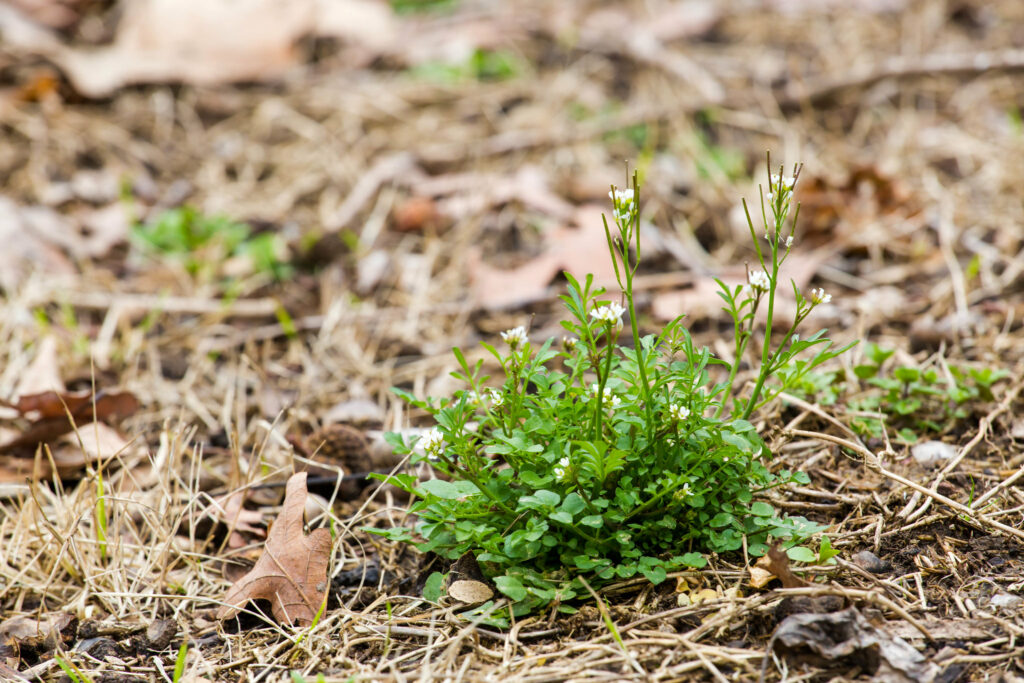
Identification: A small, annual herb in the mustard family, Hairy Bittercress grows to around 30cm in height. The compound leaves consist of small, rounded leaflets that are arranged in opposite pairs, forming a compact rosette close to the ground. The small, white flowers have four petals forming a cross shape and are around 1cm in diameter. The entire plant is covered in small, pale hairs.
Distribution: Common and widespread year-round, Hairy Bittercress can readily be found in the cracks in pavements, patios, walls and gardens. It prefers damp, shady areas but may also be found in heathland, coastal areas and moorland.
Culinary Uses: Although considered a weed, Hairy Bittercress has a wide range of culinary uses. It has a tangy, peppery flavour and can be used in salads, soups, salsa, or pesto, and can even be used to substitute cress and rocket. Picking leaves from the middle of the rosette is advised for the best flavour.
Scots Pine (Pinus sylvestris)
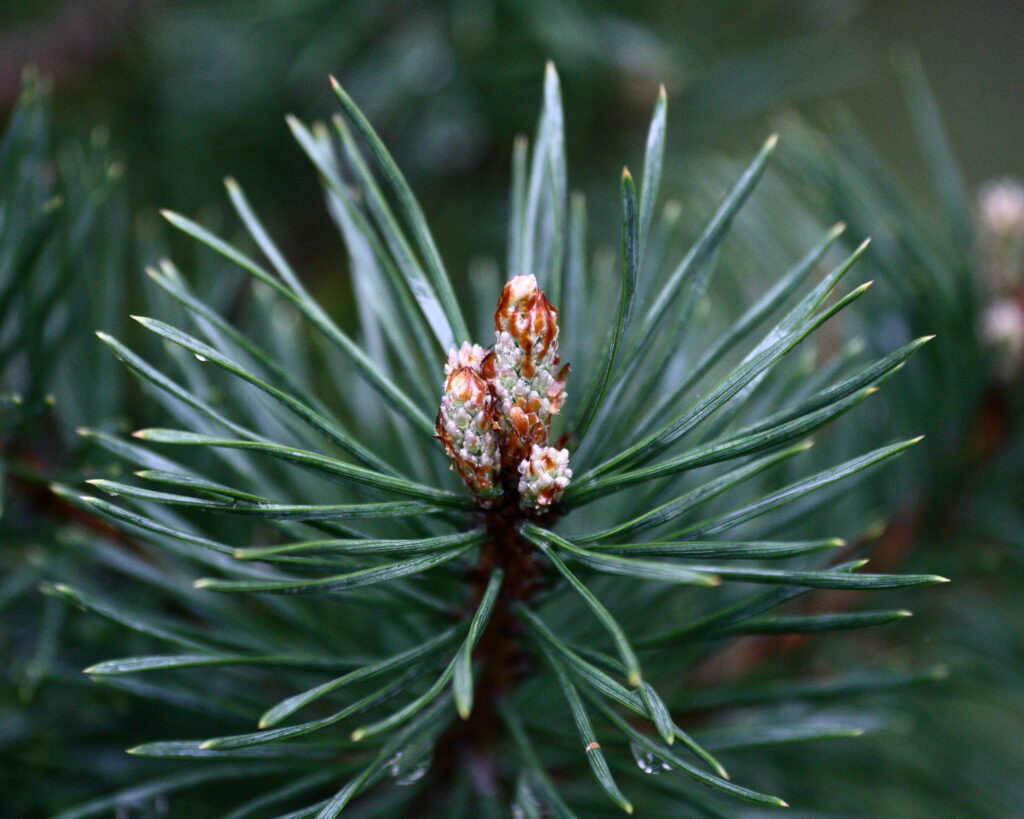
Identification: Growing up to 35m in height, Scots Pine trees are easily recognised by their straight, unbranched trunk and conical crown. The needles are grey green in colour and are arranged in twisted, bunched pairs with orange scented flowers that mature into green cones.
Distribution: Scots Pine are common and widespread throughout the northern hemisphere. Wild trees can be found in abundance in the Caledonian Pine Forest of Scotland and are widely planted elsewhere in the UK.
Culinary Uses: Scots Pine needles can be harvested throughout the year to make pestos, soups and stews. Young pine needles can be used to make tea or can be infused with oils to harness their citrusy, lemony flavour.
Fruits and Berries
Rosehips, Wild Dog Rose (Rosa canine)

Identification: Rosehips come from the wild Dog Rose; a thorny, scrambling shrub with pale pink flowers. The flowers have five petals and yellow stamens that give rise to oval shaped, green seed pods known as rosehips. These eventually ripen to a vibrant red and contain numerous small seeds covered in irritating hairs.
Distribution: Dog Rose is common and widespread across the UK where it can be found year-round in hedgerows and woodland fringes. Rosehips appear around September after the rose has flowered, and last throughout the winter – they are ready to be picked when they feel plump and soft
Culinary Uses: Rosehips can be used to make jams, jellies and syrup for cordials, tea and desserts. Rosehip tea is commonly brewed with citrus fruits, lemongrass, dried fruit and honey for a vitamin C rich drink. These berries have also been used to infuse vinegars for a fragrant salad dressing. Rosehips cannot be eaten raw and must be cooked before ingestion. The irritating hairs around the seeds should also be removed during preparation.
Sloes, Blackthorn (Prunus spinosa)
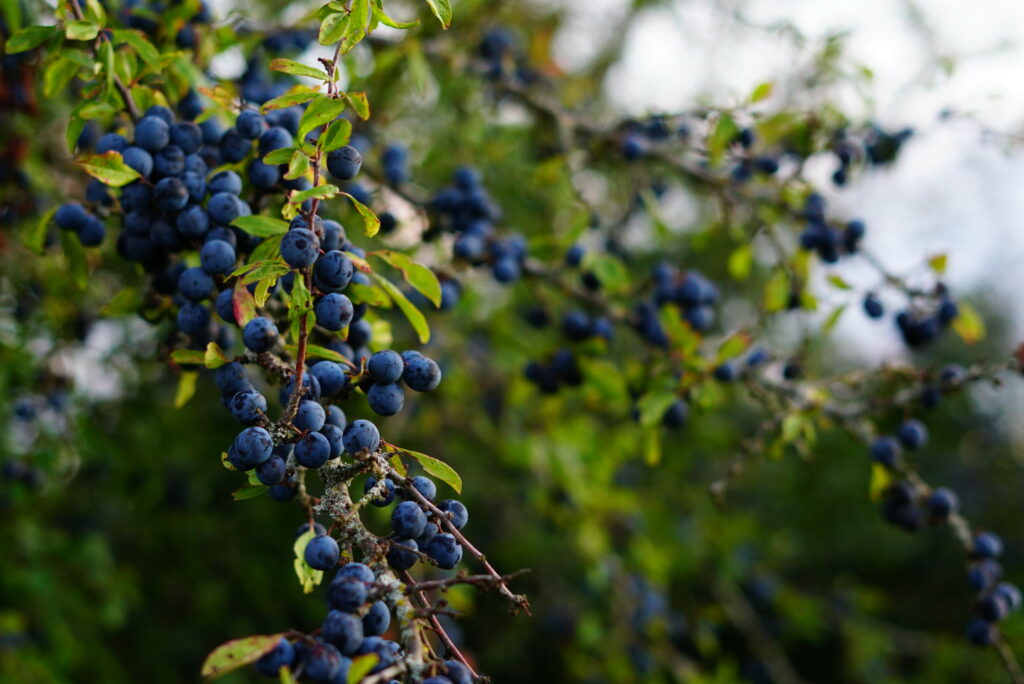
Identification: Sloes grow on the Blackthorn tree, a black-barked scrub that grows to around 7 metres. Blackthorn has spiny, black-purple twigs and oval-shaped, toothed leaves which have pointed tips and a tapered base. Blackthorn trees produce small, white blossom in early spring, before the leaves develop. The sloes, which are the smallest fruit in the plum family, are blue-black berries around 1cm across. They can be picked from September to December and are known for their acidic taste.
Distribution: Blackthorn can be found in abundance in woodland, field edges and hedges throughout the UK.
Culinary Uses: It is recommended to pick sloes after the first frost for the best flavour, however this can be replicated by freezing and thawing the sloes at home. The tart flavour of sloe berries is favoured for preserves, wine and sloe gin. Historically, sloes have also been used to make tonics and syrups as health remedies.
Elderberries, Elder Tree (Sambucus nigra)
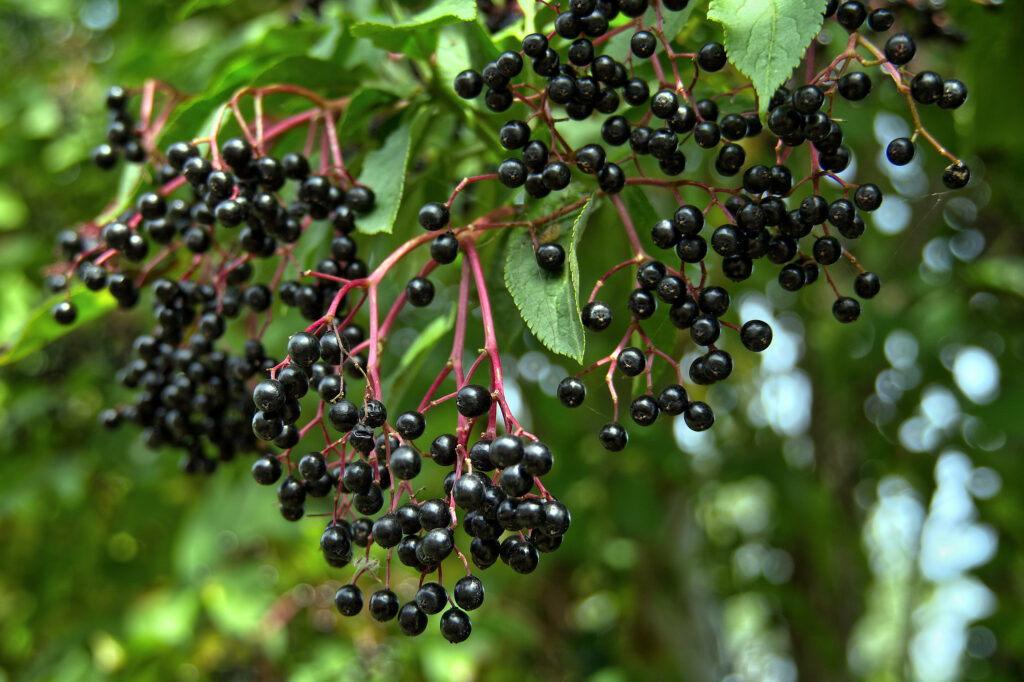
Identification: The Elder tree is a deciduous species which can grow up to six metres in height and is identifiable by its toothed, oval leaves. Each compound leaf has up to seven leaflets, arranged in opposite pairs with a single leaflet at the top. The flowers of this tree, elderflowers, bloom between May and June. Clusters of white, five-petalled flowers appear with prominent yellow stamens, and umbels of dark elderberries form in late August.
Distribution: Elder trees can be found growing in a variety of conditions year-round, and are largely non-selective with their environment, which can include hedgerows, woodland, scrubland, grassland and urban green spaces.
Culinary Uses: Packed full of antioxidants and vitamins, elderberries have been used for centuries to support human health. These dark berries can be used to make wine, syrups, jams, cordials and can be incorporated into cakes and crumbles. Please note that elderberries should always be cooked before eating to neutralise cyanide compounds present within the fruit.
Recommended Reading:

Field Studies Council Guide to Foraging
An essential fold-out guide to the most common and tasty plants to forage in Britain and Ireland.
A unique cookbook containing 65 wild food recipes with detailed identification guides to 15 common edible plants.
A waterproof practical pocket guide to 194 edible fruits, nuts, flowers, vegetables and more that can be foraged in the UK and Europe.
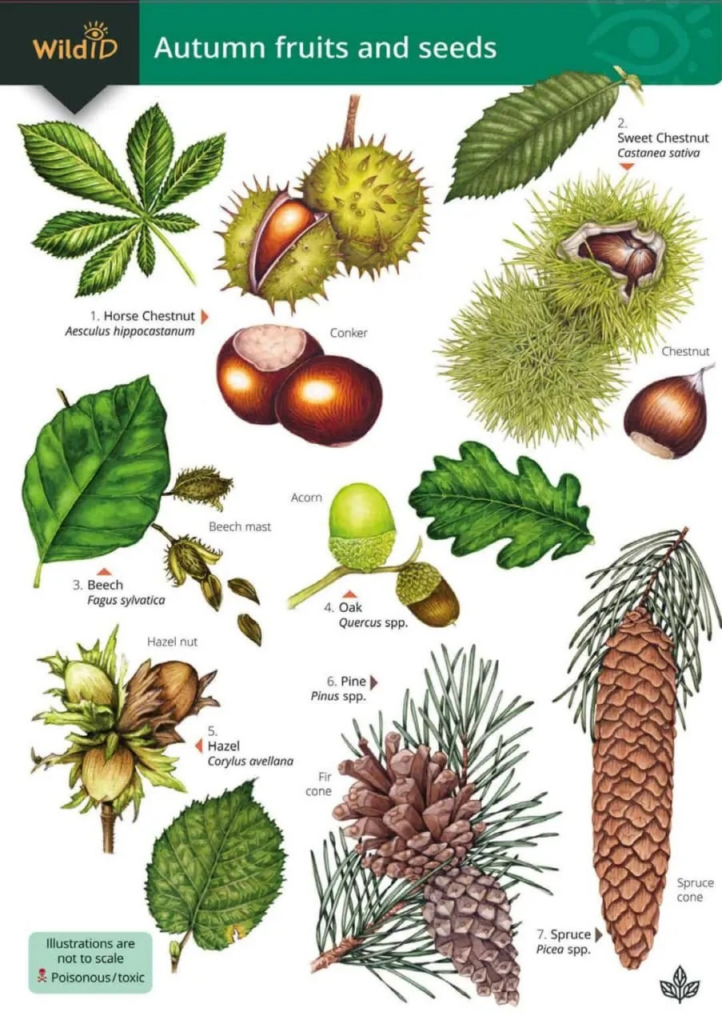 Field Studies Council Guide to Autumn Fruits and Seeds
Field Studies Council Guide to Autumn Fruits and Seeds
A concise guide to 33 different fruits produced by common trees and shrubs in Britain.

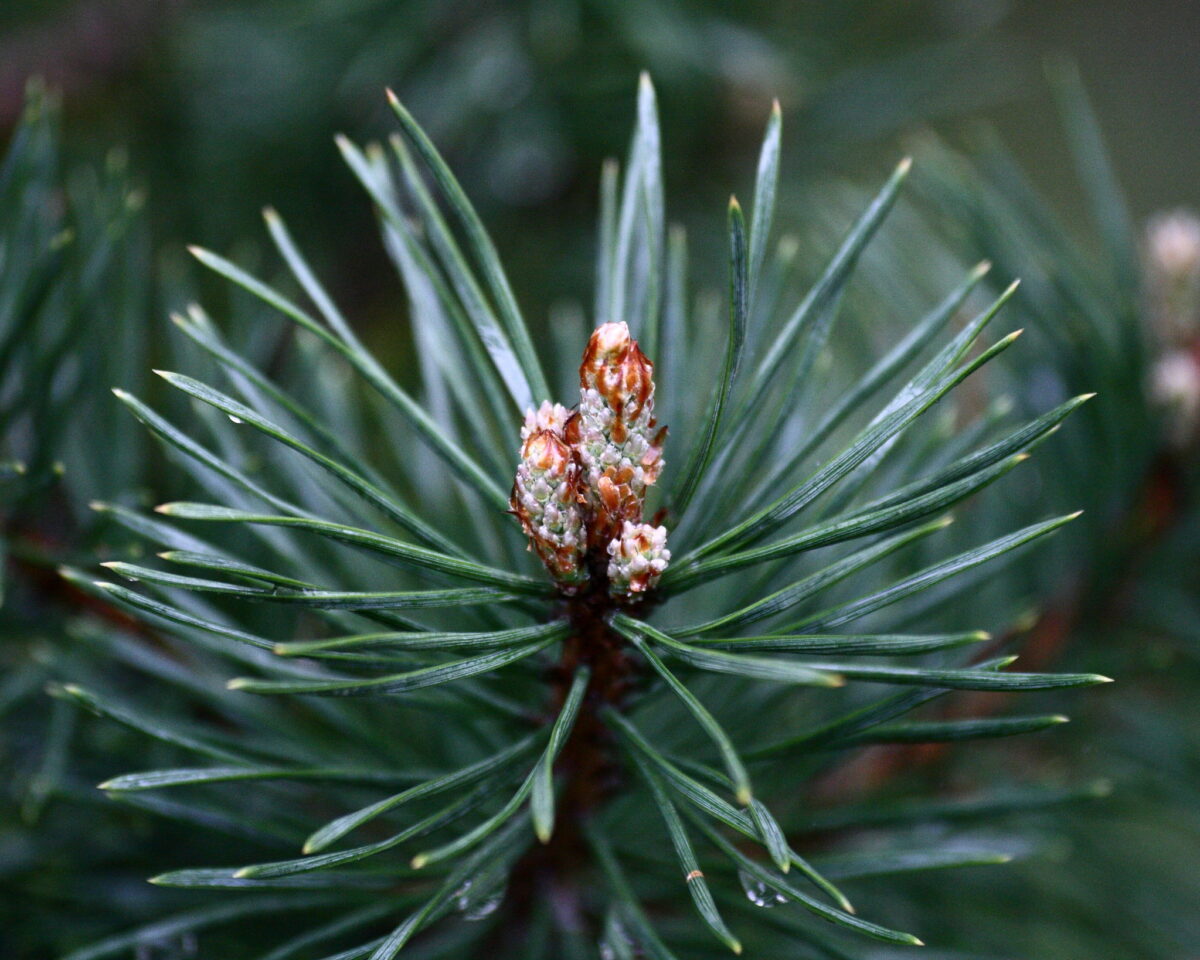

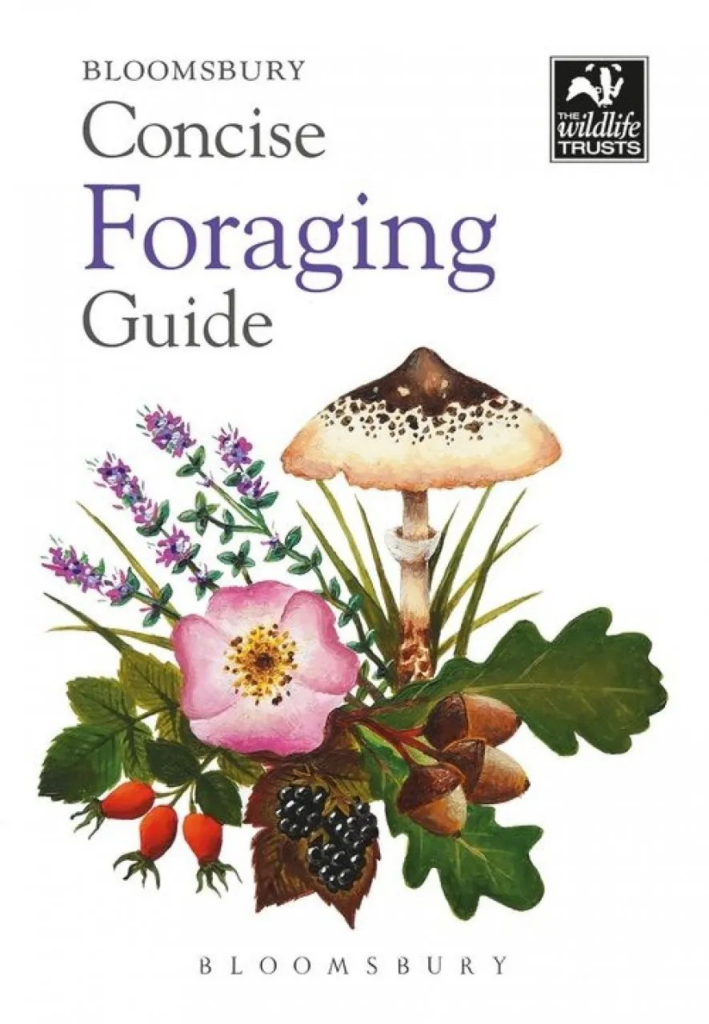




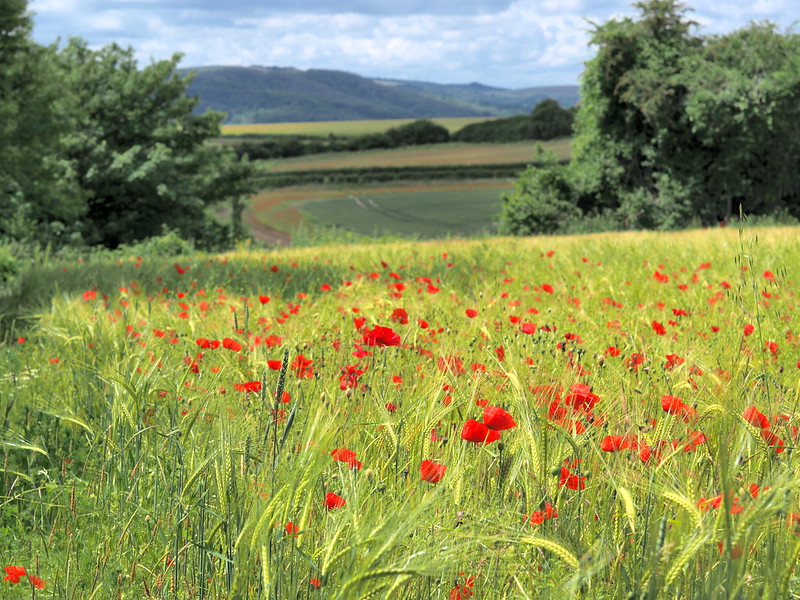
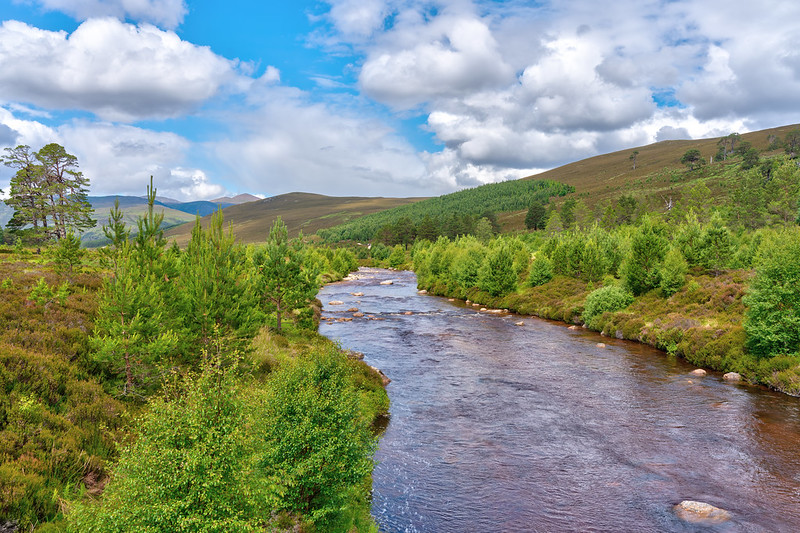


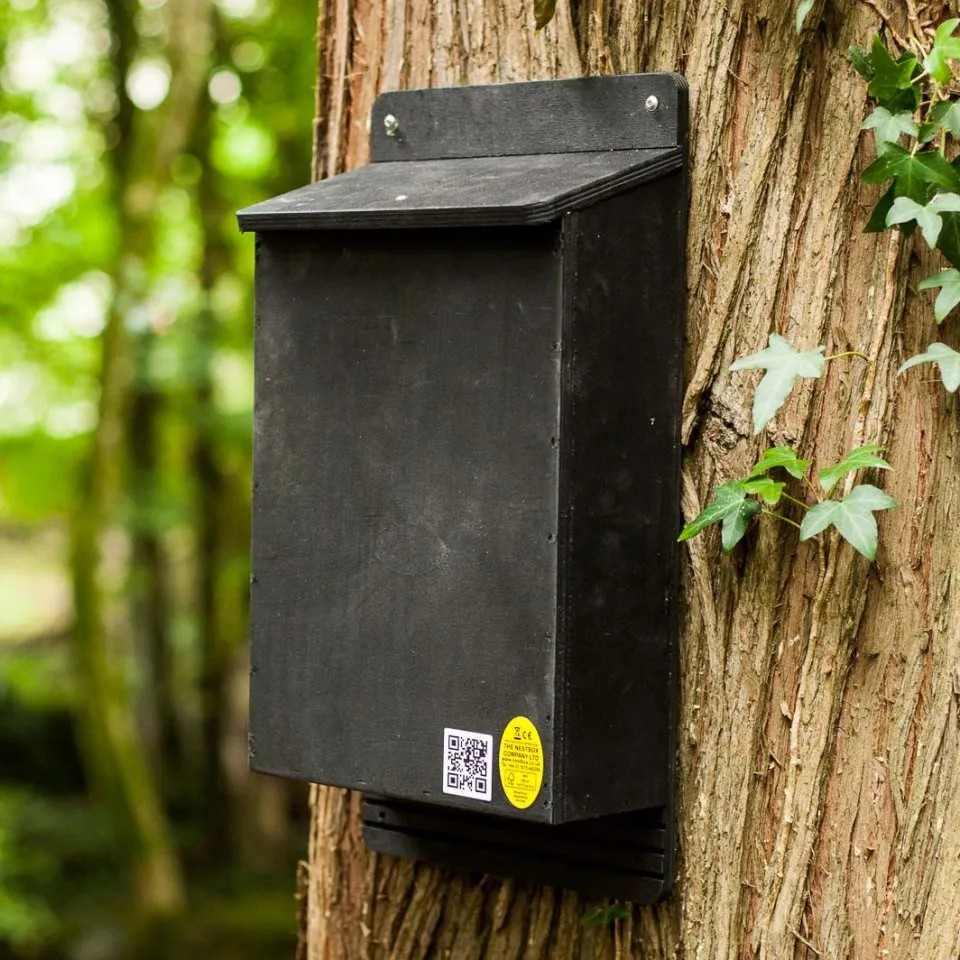



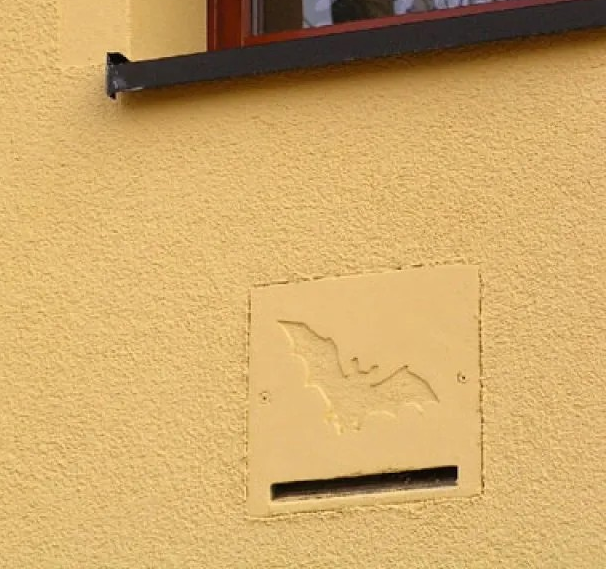






 Stephen is a naturalist, author and broadcaster well known for his work with the BBC Natural History Unit working on landmark programmes such as Springwatch and The Nature of Britain. He currently holds the position of senior lecturer in creative writing at Bath Spa University and is also president of the Somerset Wildlife Trust.
Stephen is a naturalist, author and broadcaster well known for his work with the BBC Natural History Unit working on landmark programmes such as Springwatch and The Nature of Britain. He currently holds the position of senior lecturer in creative writing at Bath Spa University and is also president of the Somerset Wildlife Trust.